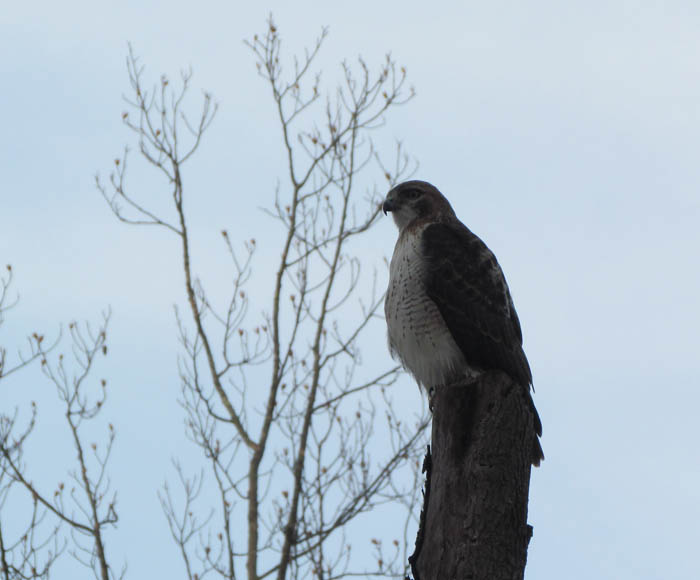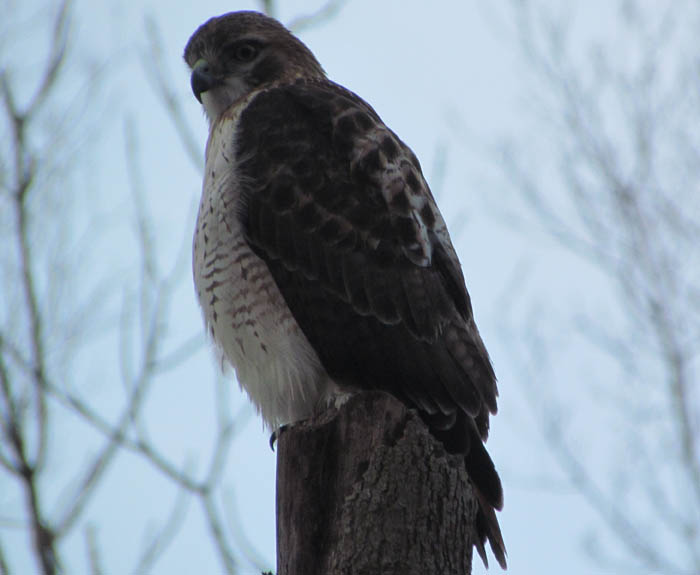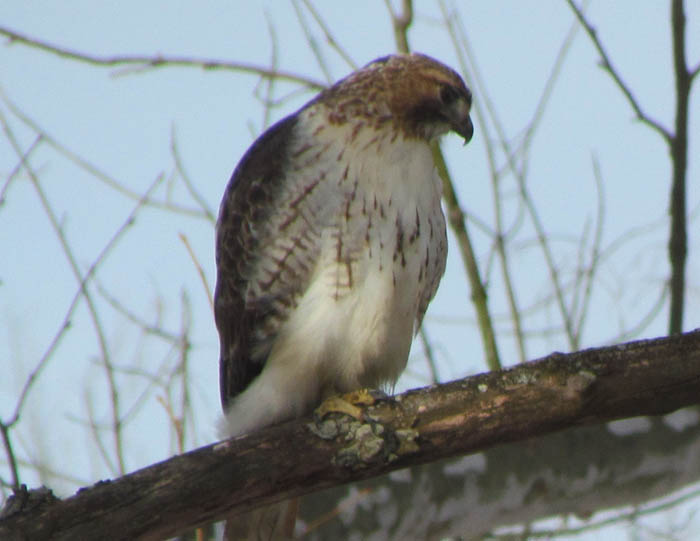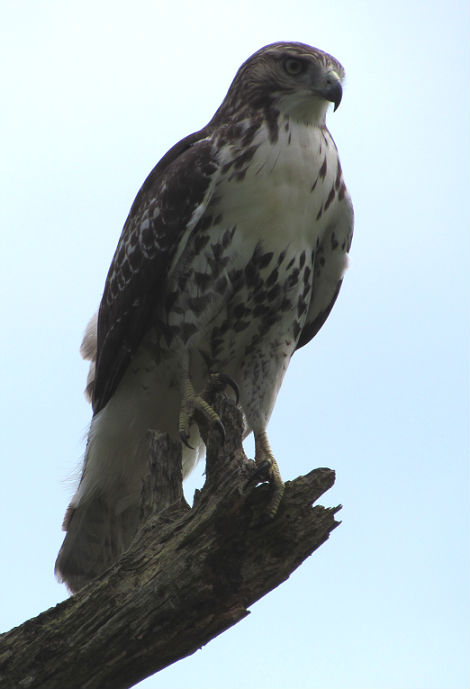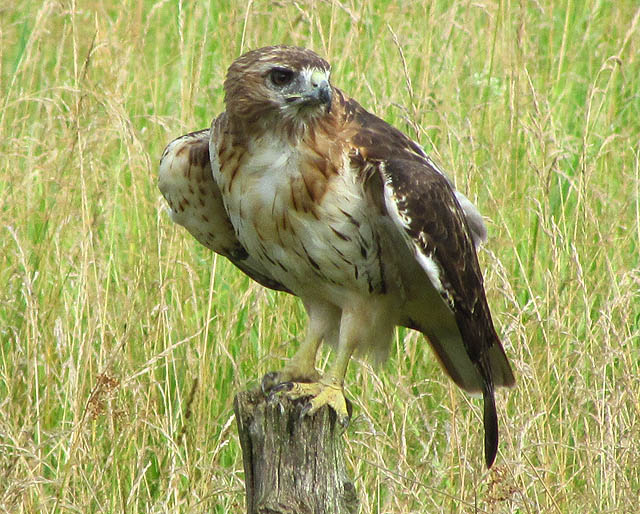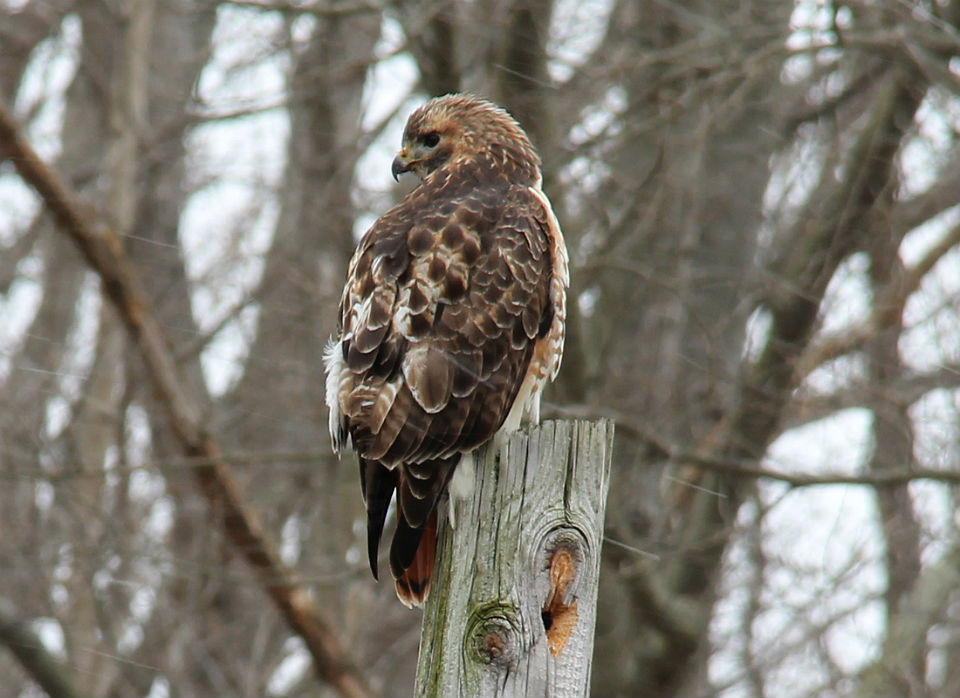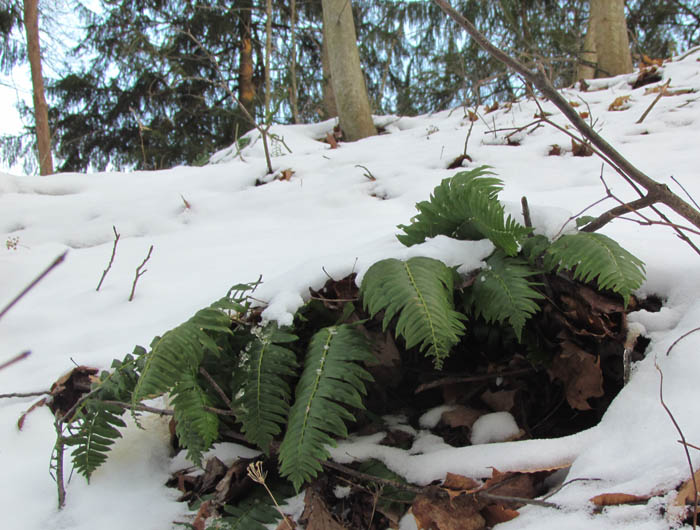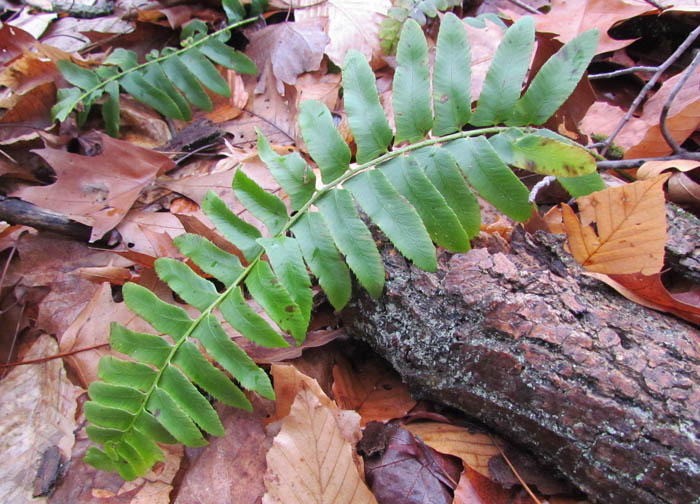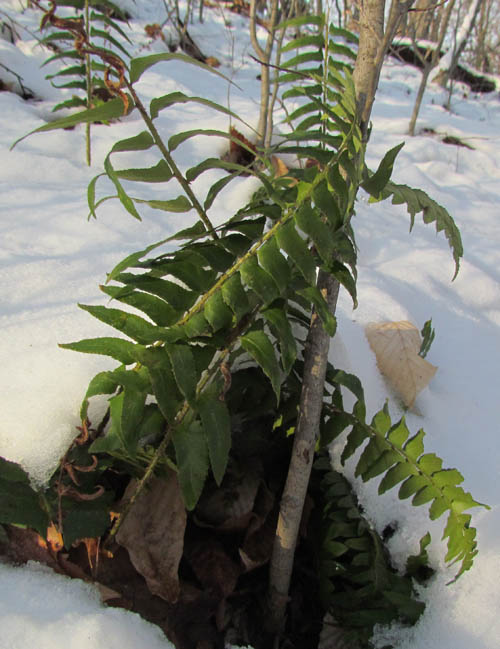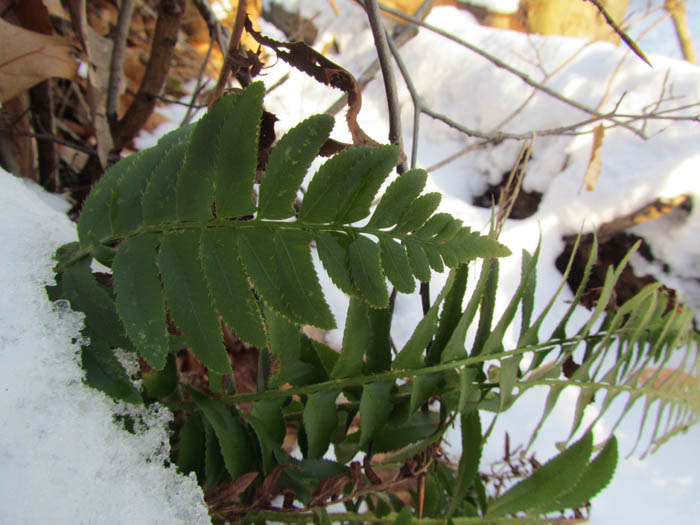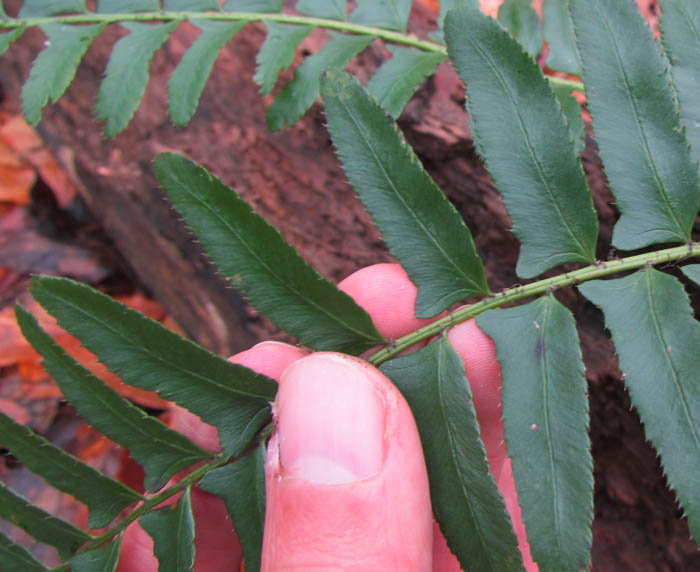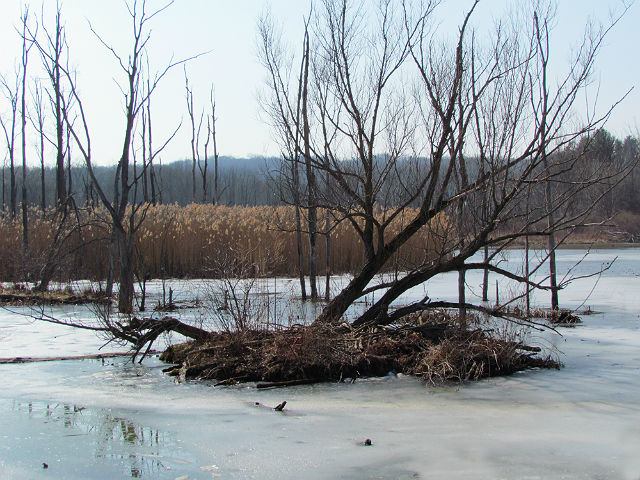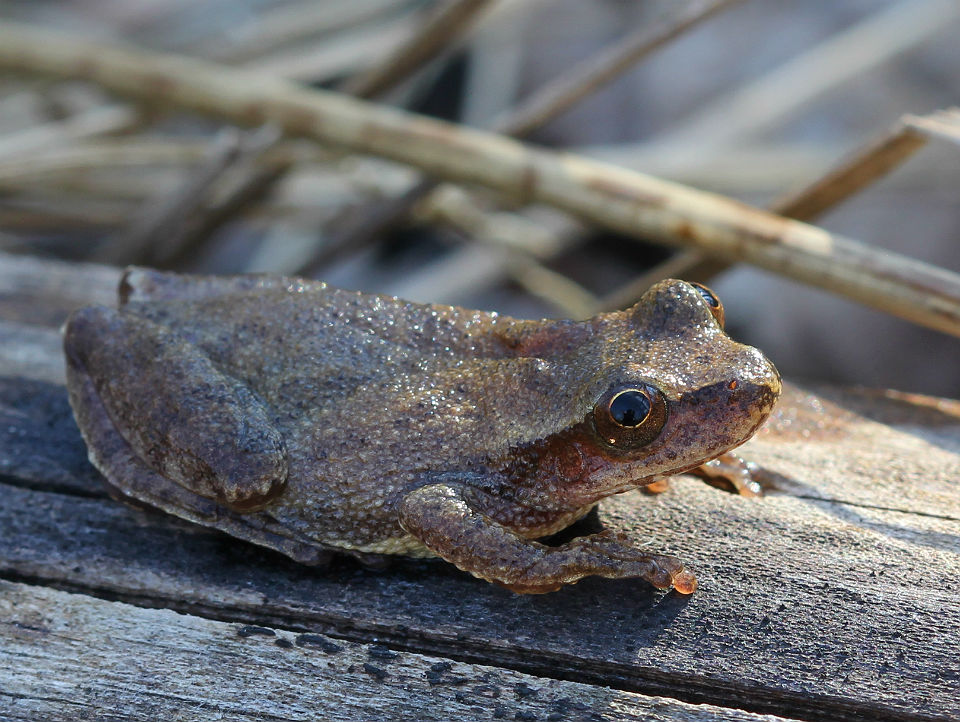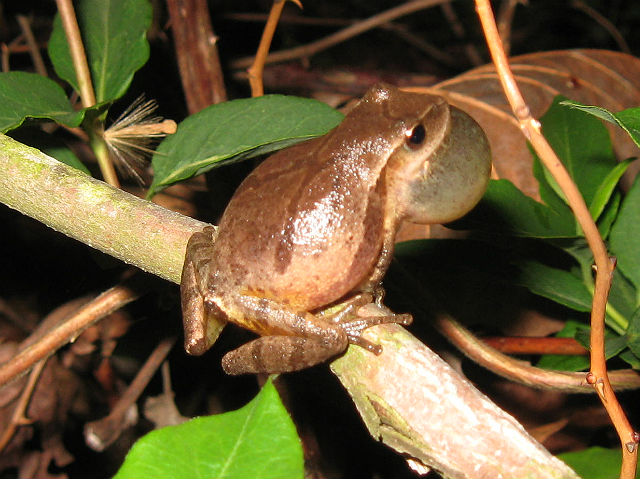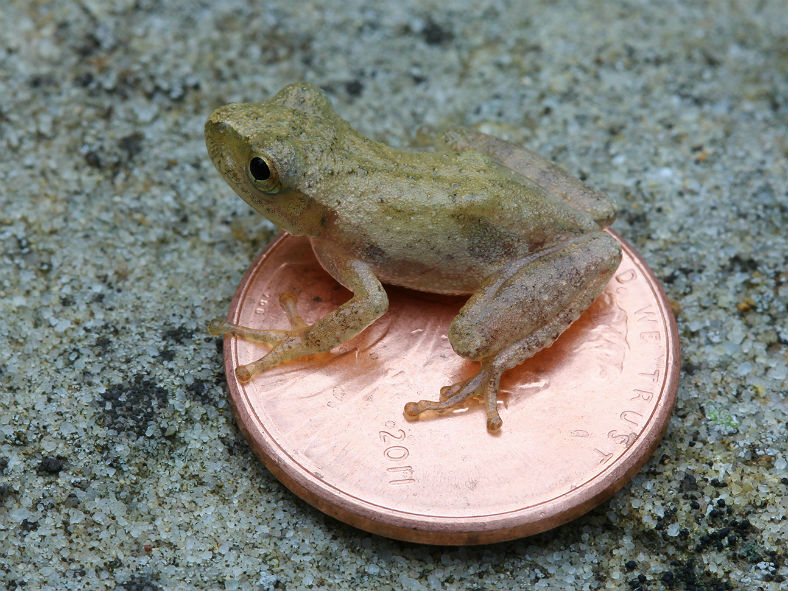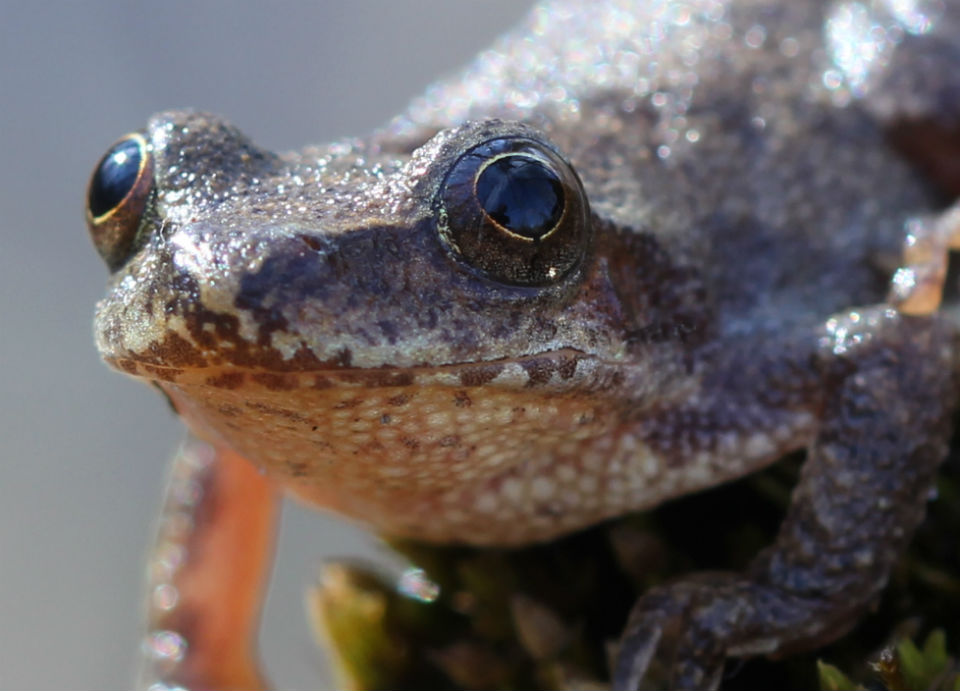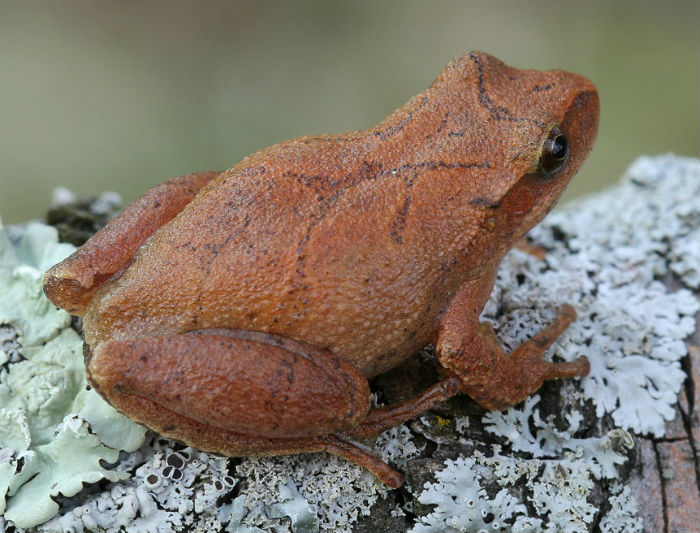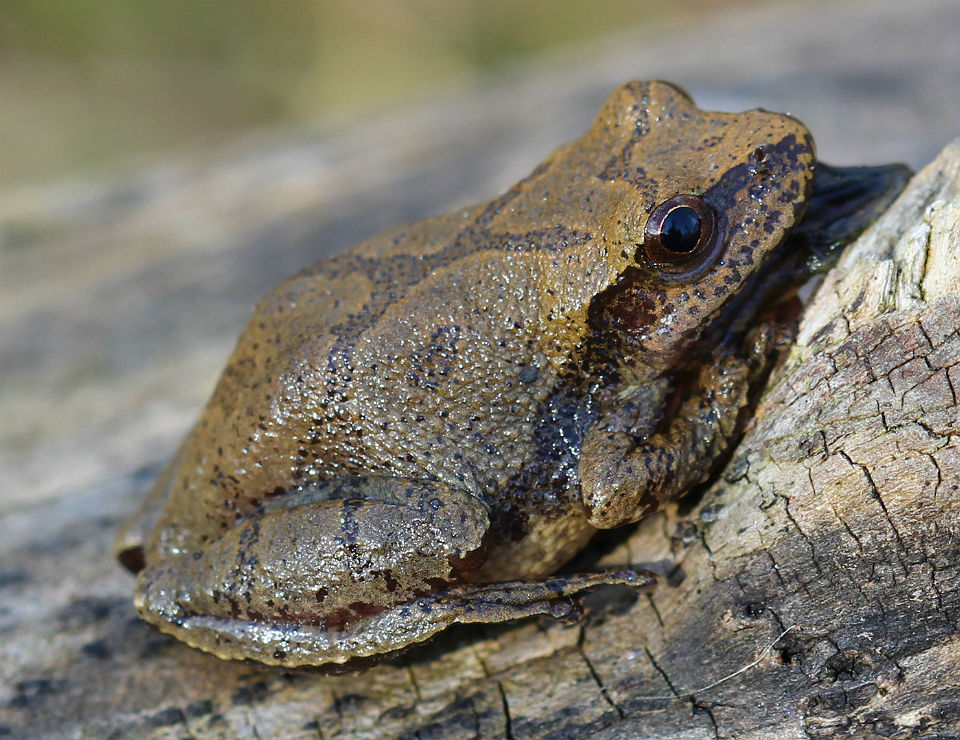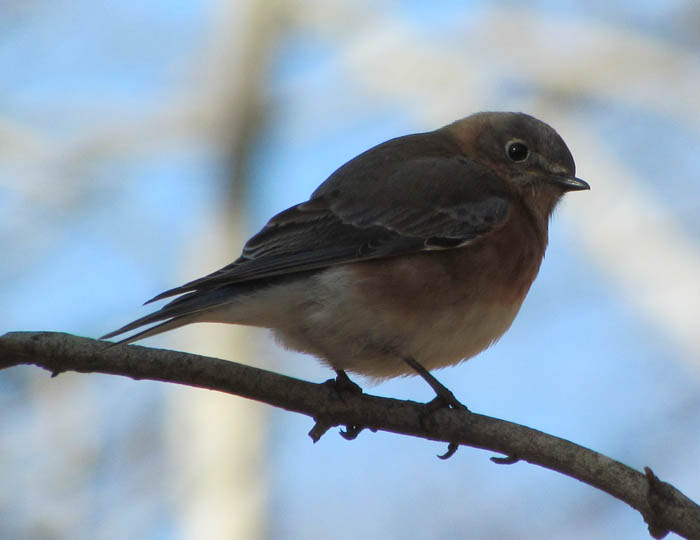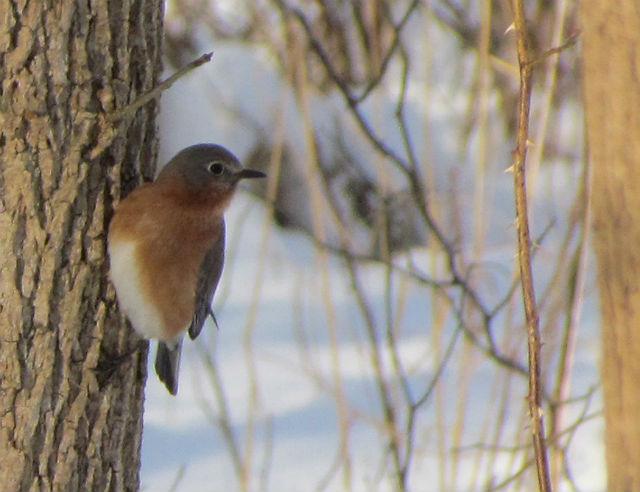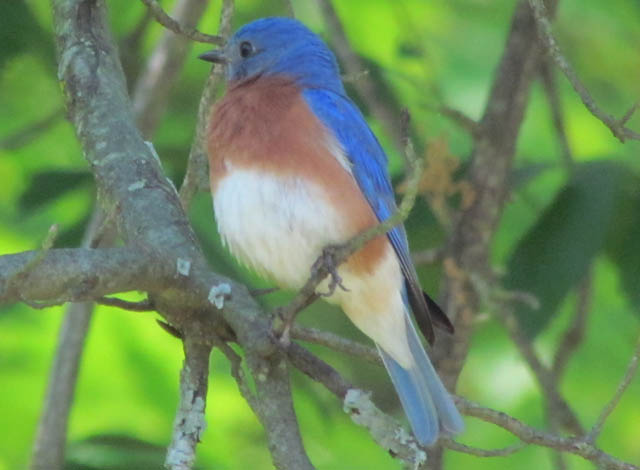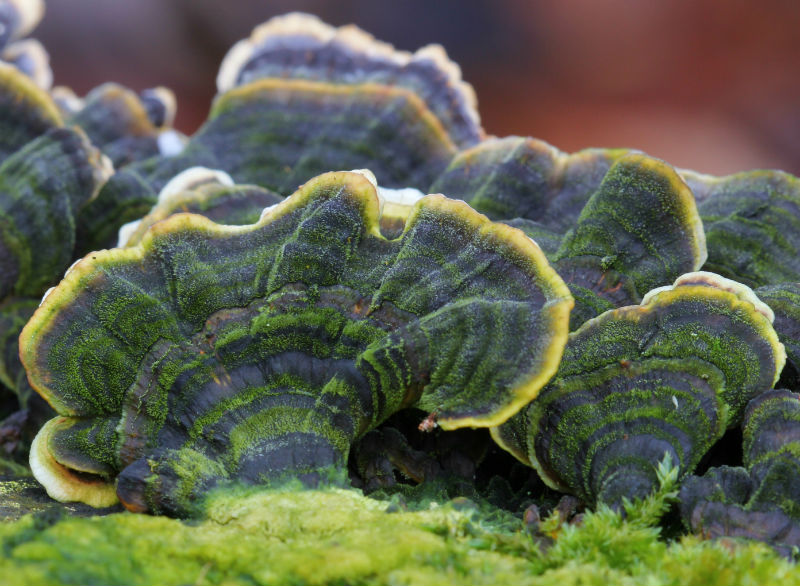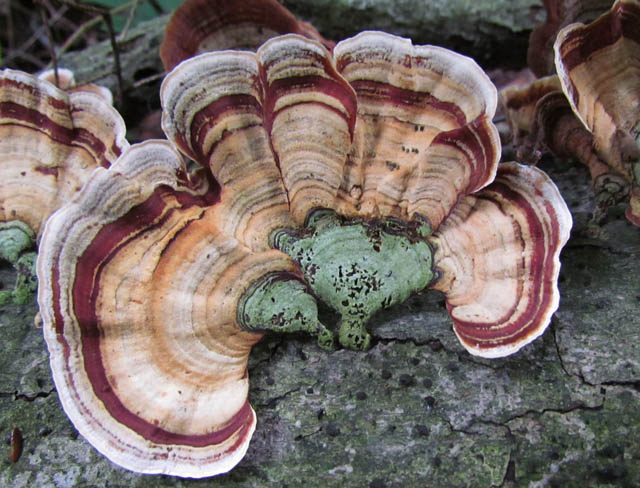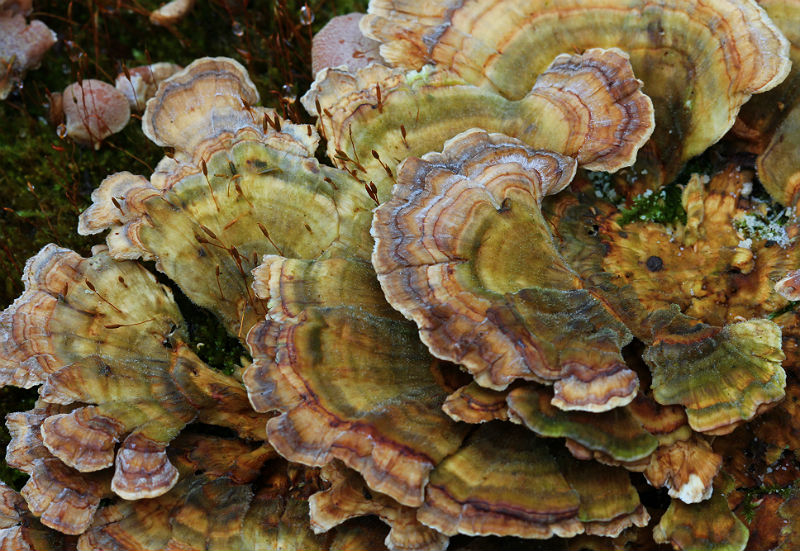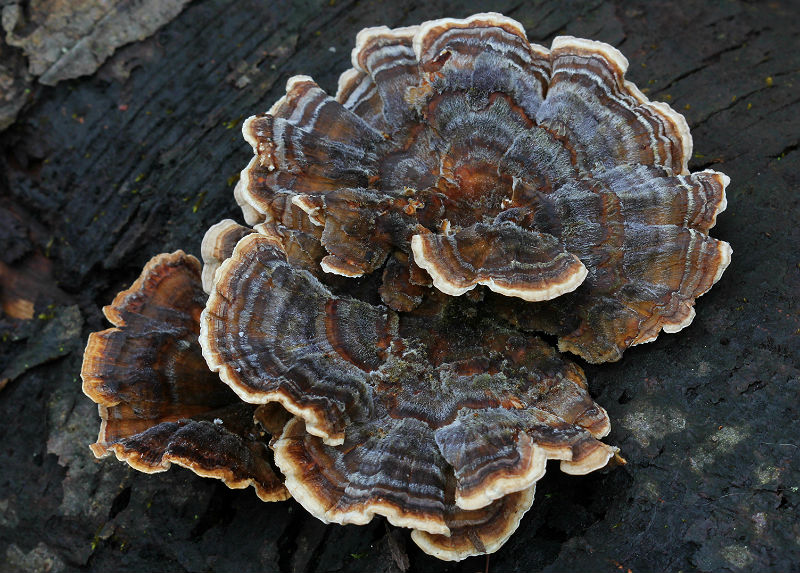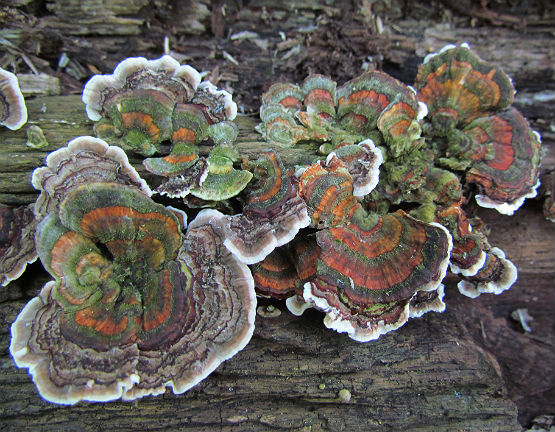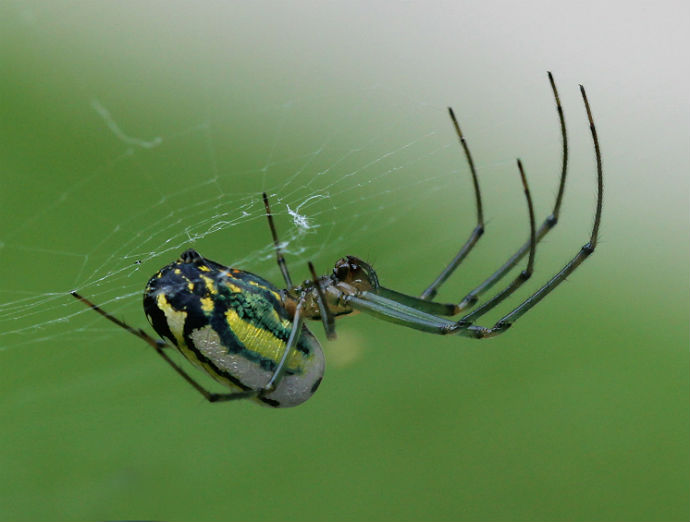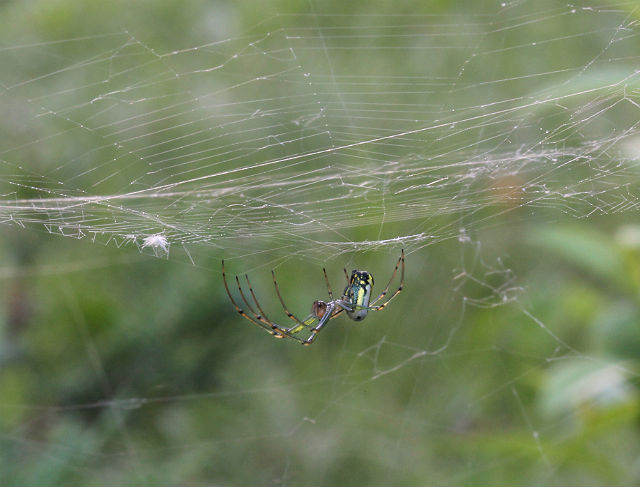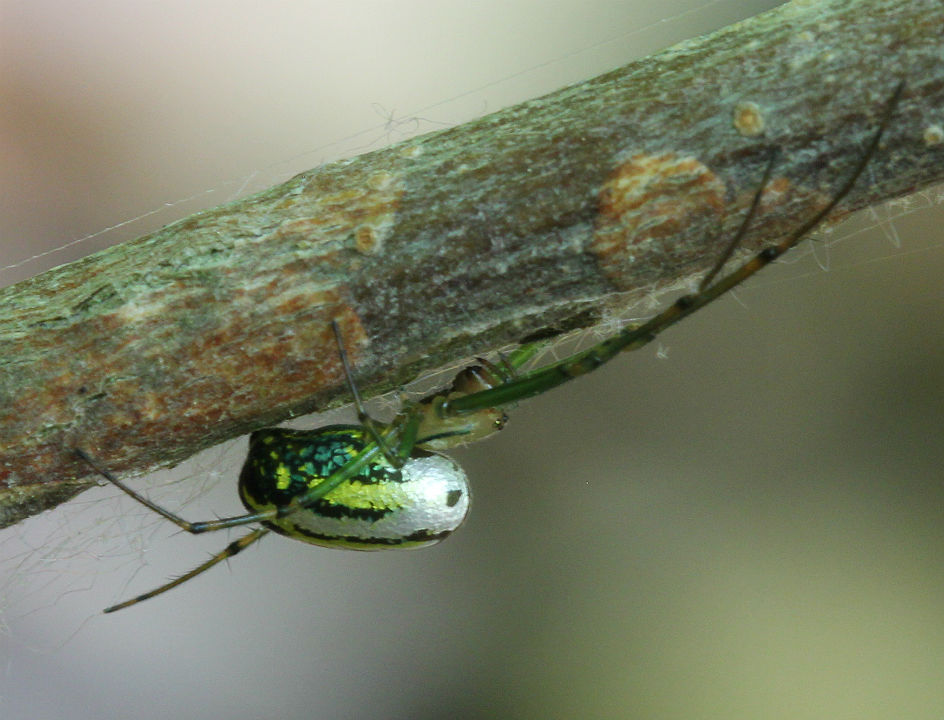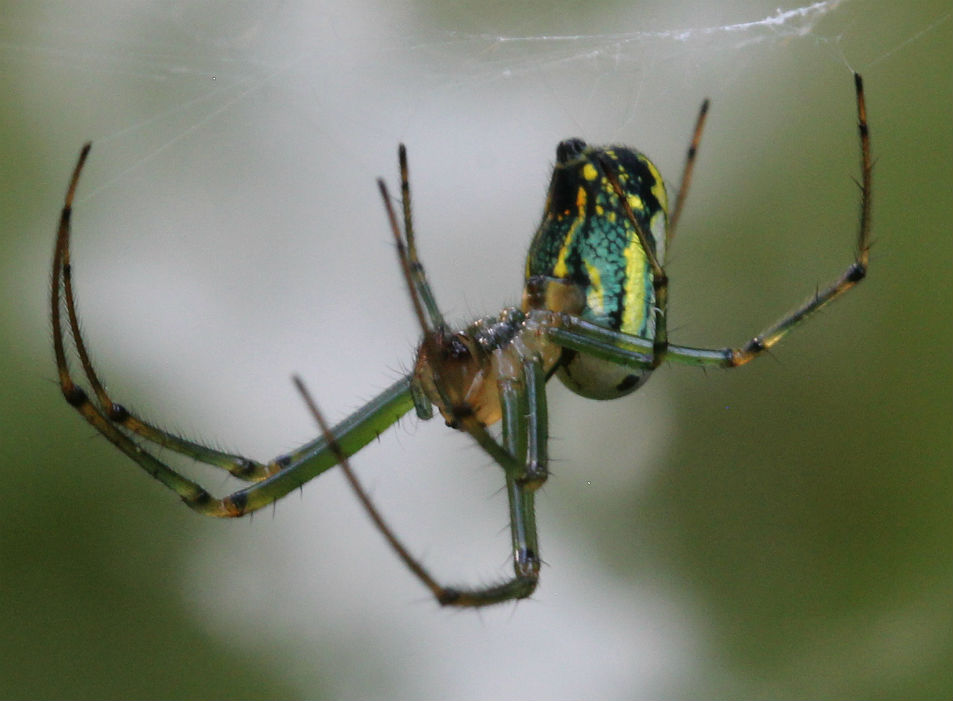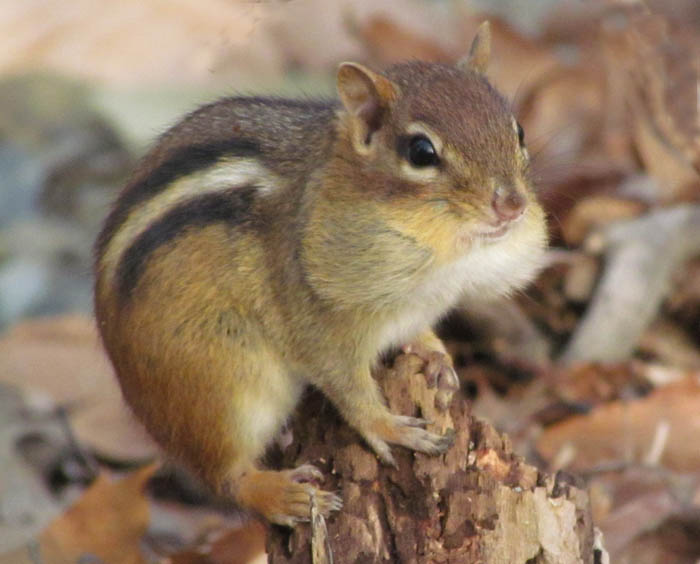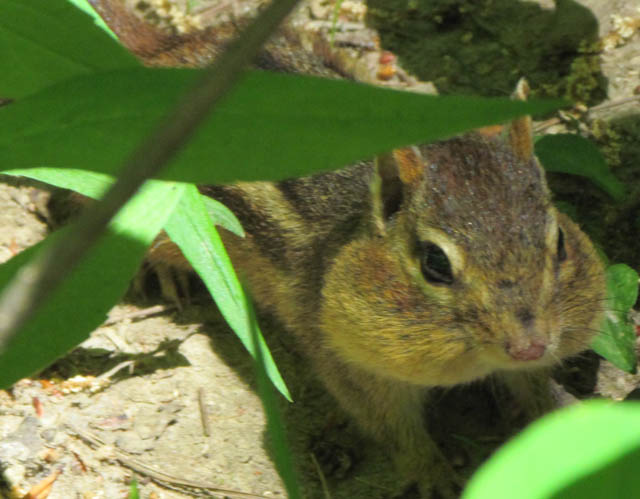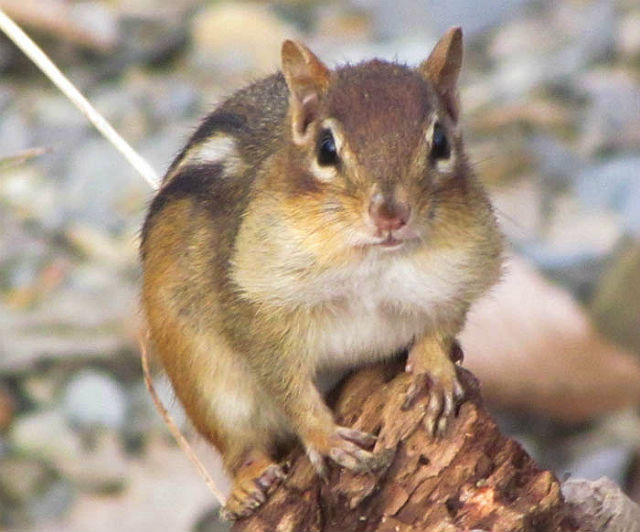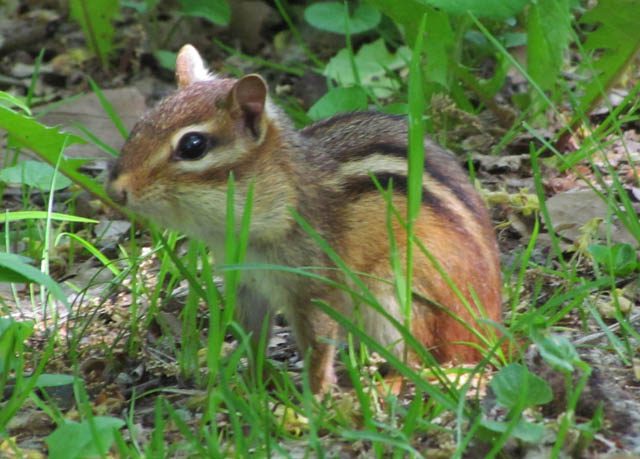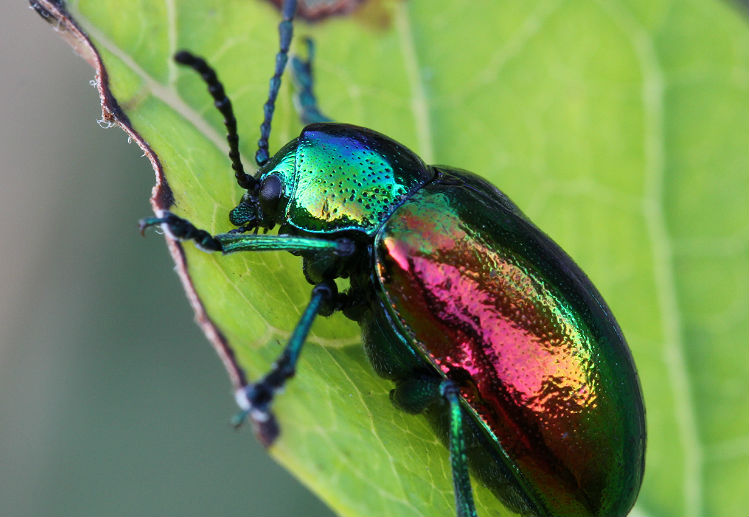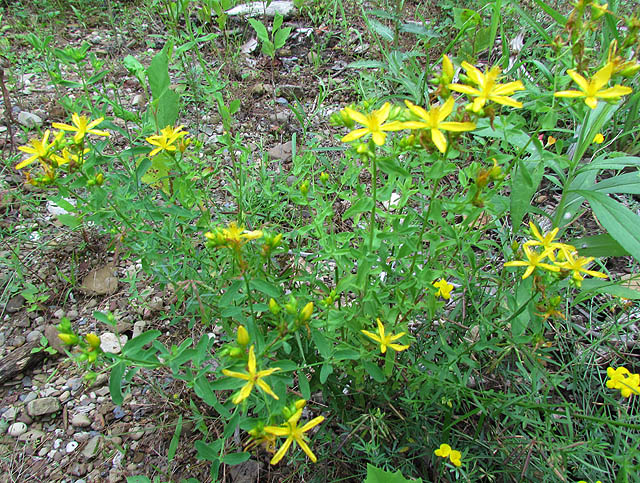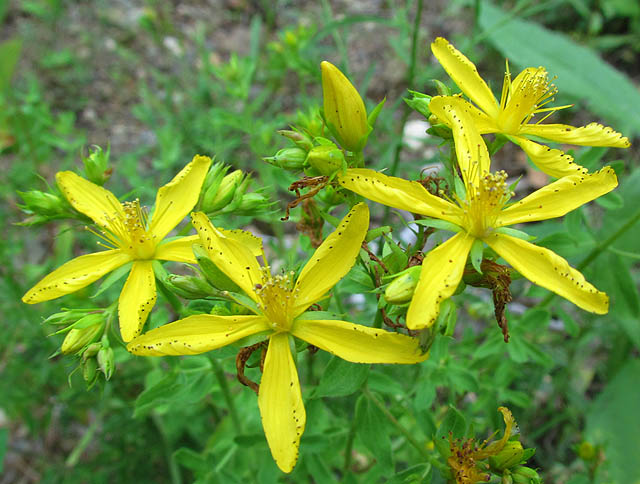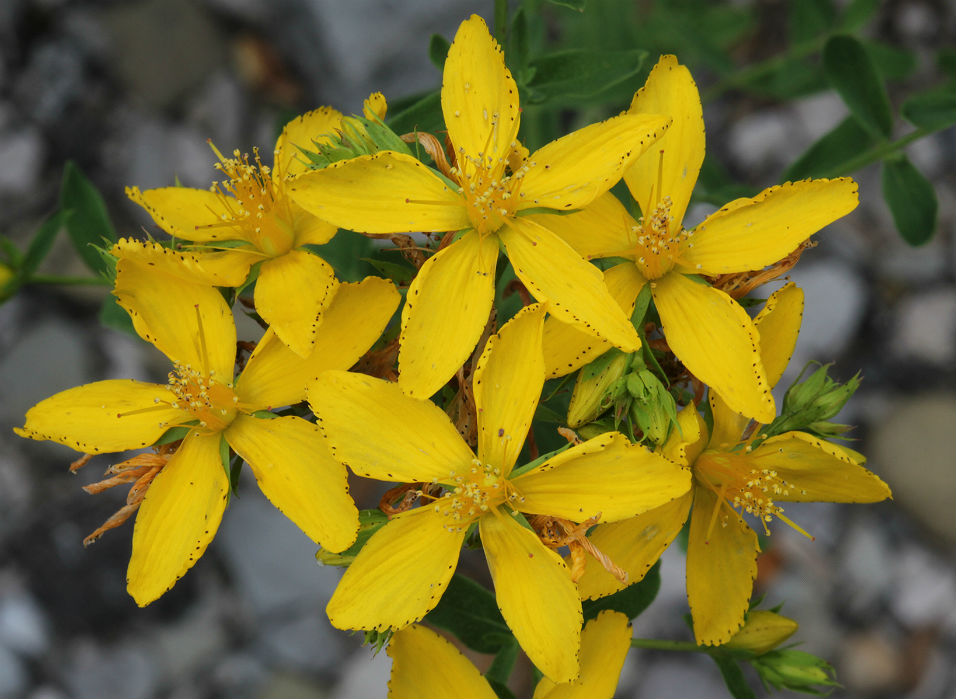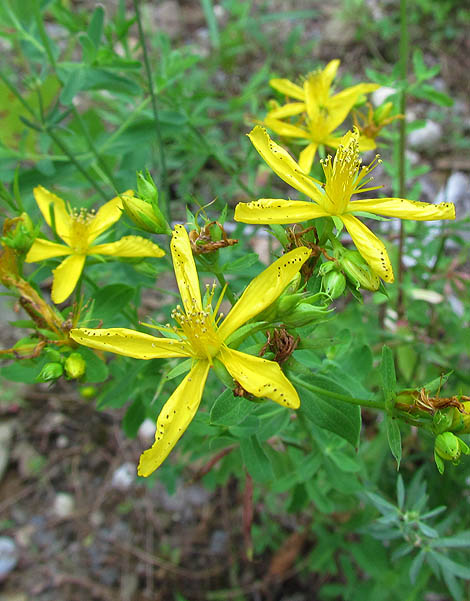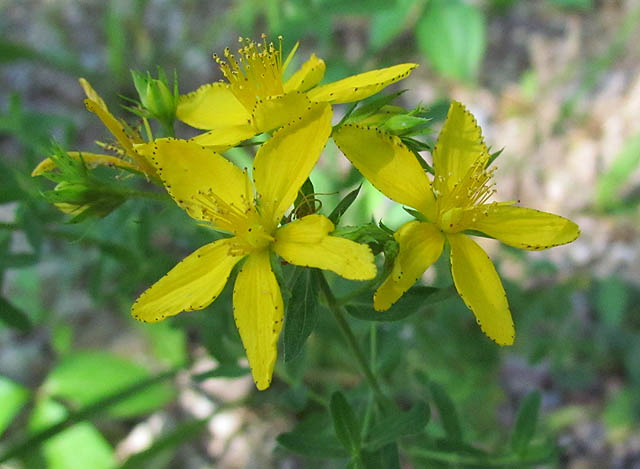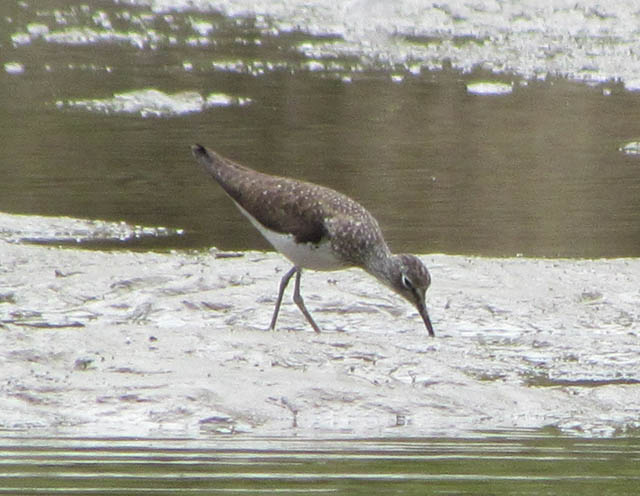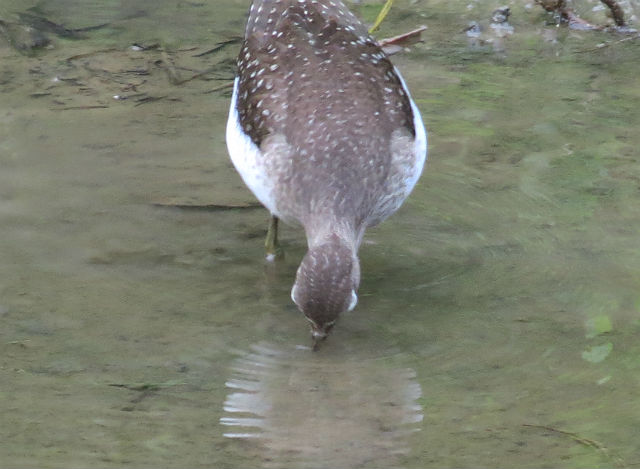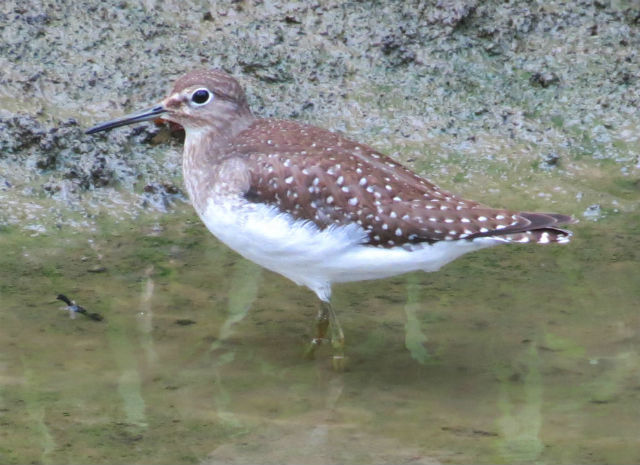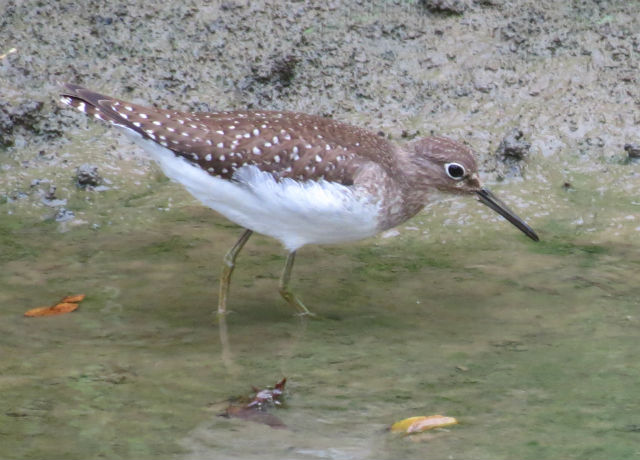It was cold, it was grey, it was overcast. A typical December day in the Greater Cleveland Area. I decided to see what was up at Brecksville Reservation.
This Red-tailed Hawk was busy scanning the landscape below. Slowly it would move its head from side-to-side, looking for any kind of movement. A few times the bird stood up, as if it were about to take flight.
Before long something caught its interest and the bird dove down to the forest floor. The sound from the impact of where the hawk hit the leaves could be heard from where I was standing.
It was unsuccessful in catching its prey, so it found a new place to perch and start the process all over again. The Red-tailed Hawk is the most common large, broad-winged hawks in North America. Its range is from Alaska and northern Canada south to Central America.
The Red-tailed Hawk is a bird of open country. It can be seen along fields and perched on telephones poles, fenceposts, or trees standing alone or along edges of fields. The eyesight of a hawk is 8 times more powerful than a human’s.
This large, majestic bird has another way of hunting – by spending much of its time soaring and scanning the ground below. Both hunting styles allow them to expend a minimum amount of energy when hunting. Its call is commonly used in television and movies to represent the vocalizations of other birds, including vultures and eagles.

